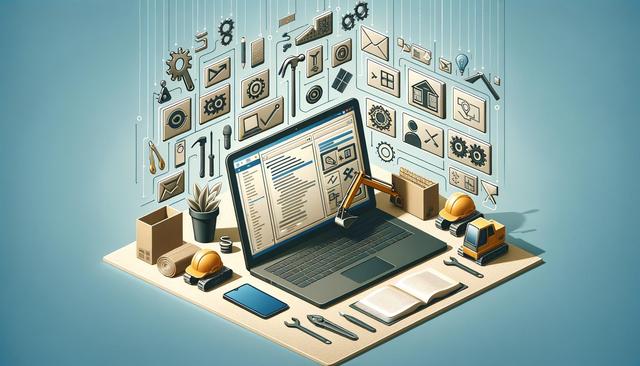The Role of Construction Software in Modern Projects
Construction software has become an essential tool in the architecture, engineering, and construction (AEC) industry. It streamlines project workflows, enhances communication, and reduces costly errors. One of the most significant advancements in this field is the integration of 3D building design software, which enables professionals to visualize and simulate construction projects before breaking ground. This shift from traditional 2D methods to digital 3D models allows for better planning, coordination, and execution across all project phases. Teams can now collaborate virtually, share updates in real-time, and resolve design conflicts early in the process, ultimately saving time and resources.
Construction software also supports a wide range of tasks beyond design, including project management, cost estimation, scheduling, and quality control. These functionalities help ensure that projects remain on track and within budget. With customizable dashboards and reporting tools, stakeholders gain visibility into every aspect of the build, from procurement to final delivery.
Advantages of 3D Building Design Software
3D building design software brings a range of advantages to the construction process. By creating detailed, lifelike models of structures, architects and engineers can identify potential issues before they escalate. These digital models provide a comprehensive view of both the exterior and interior aspects of a building, including mechanical, electrical, and plumbing systems. This level of detail significantly reduces the chance of errors and omissions in the construction documents.
Some key benefits include:
- Improved design accuracy and coordination
- Enhanced visualization for stakeholders and clients
- Better integration with Building Information Modeling (BIM) tools
- Faster design iterations and revisions
By using 3D modeling as part of a broader construction software solution, teams can also implement clash detection, which identifies conflicting elements in a project before construction begins. This proactive approach limits rework and boosts efficiency throughout the construction lifecycle.
Integration with Project Management Platforms
Many construction software suites offer seamless integration with project management tools, enabling streamlined coordination between design, procurement, and on-site execution. This integration ensures that all team members have access to the same information and documents, reducing the likelihood of miscommunication. Scheduling tools within these platforms allow project managers to set realistic timelines, allocate resources effectively, and monitor progress in real-time.
Useful features often include:
- Gantt charts for visualizing project timelines
- Resource tracking and allocation tools
- Document management systems that centralize all files
- Communication modules for team collaboration
These capabilities help construction professionals maintain control over complex workflows and ensure that milestones are met. When paired with 3D building design software, project management tools create a unified environment for planning, execution, and post-project analysis.
Enhancing Collaboration Across Teams
One of the standout advantages of construction software is its ability to enhance collaboration among dispersed teams. Whether working across different departments or geographic locations, team members can stay connected through cloud-based tools. This connectivity supports real-time updates, version control, and data sharing, which are vital in fast-paced construction environments.
Features that support collaboration include:
- Cloud-based document storage and access
- Live editing and annotation tools
- Audit trails for tracking changes
- Permission controls to manage data access
When combined with 3D building design software, these collaborative features allow stakeholders to review and comment on models directly, fostering more informed decision-making. This level of transparency ensures that everyone involved in the project—from architects to contractors—has a clear understanding of the design intent and project status.
Future Trends in Construction Software
As technology continues to evolve, the construction industry is embracing innovations that further enhance the capabilities of construction software. Artificial intelligence (AI), machine learning, and augmented reality (AR) are becoming increasingly integrated into design and management platforms. These technologies offer predictive insights, automate routine tasks, and provide immersive experiences that improve stakeholder engagement.
Emerging trends to watch include:
- AI-driven risk analysis and safety management
- AR-assisted site inspections and training
- Generative design tools that optimize space and materials
- Digital twins for real-time monitoring of building performance
These advancements aim to make construction more efficient, sustainable, and responsive to the needs of modern society. As 3D building design software becomes more sophisticated, its role in shaping the future of architecture and construction will continue to expand.
Conclusion: Embracing Digital Transformation in Construction
For professionals across the AEC industry, adopting construction software—especially tools featuring 3D building design capabilities—can lead to more streamlined, accurate, and collaborative project outcomes. As construction demands grow in complexity, leveraging digital solutions becomes not just beneficial but essential. By integrating design, planning, and management into a single digital ecosystem, construction teams can improve efficiency, reduce risk, and deliver high-quality builds that meet client expectations and regulatory requirements.












